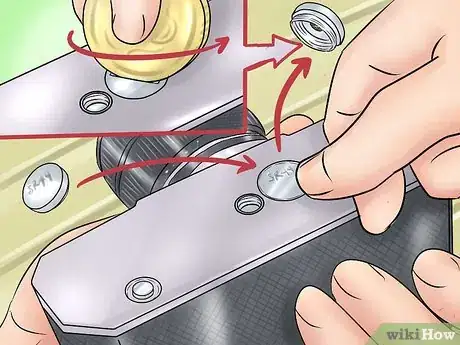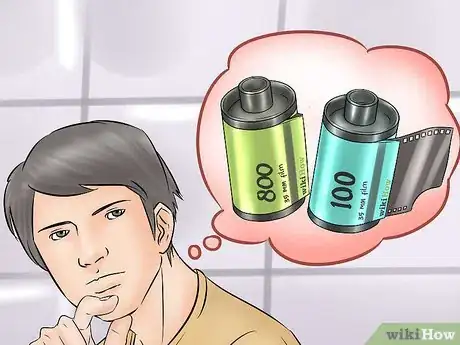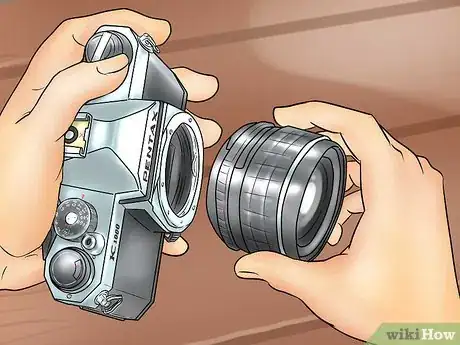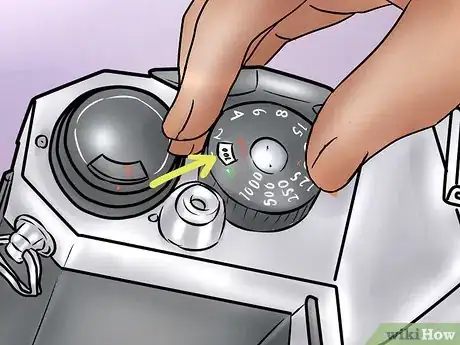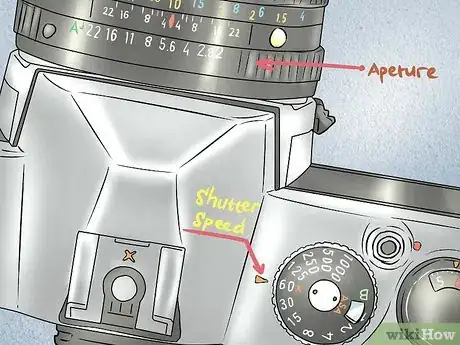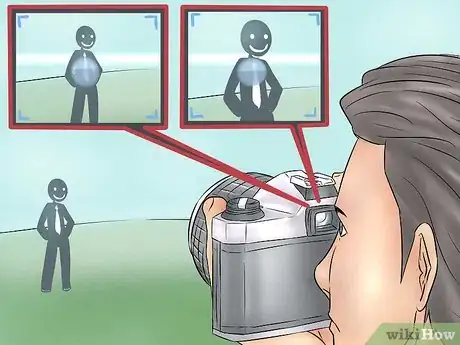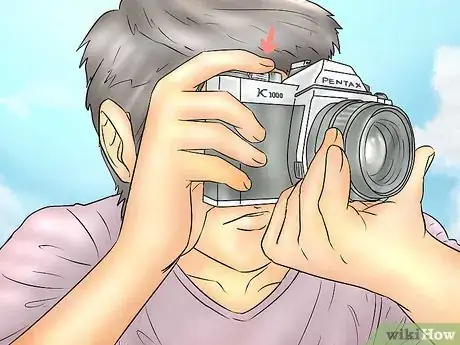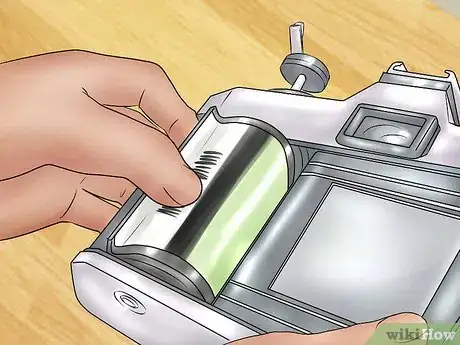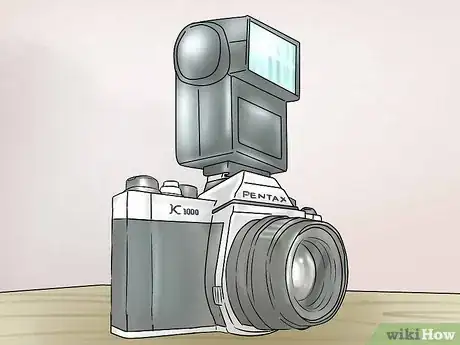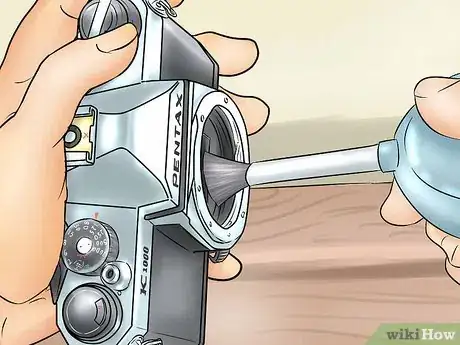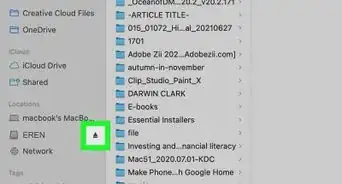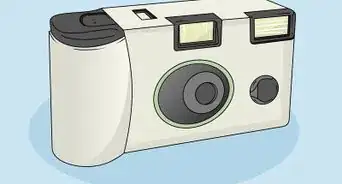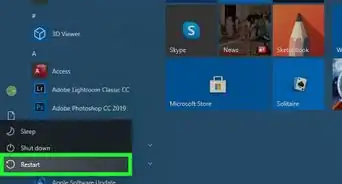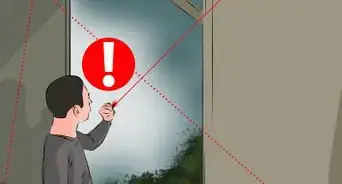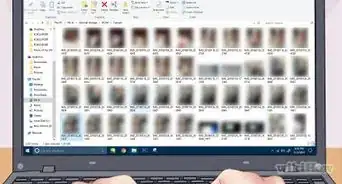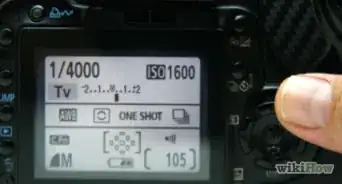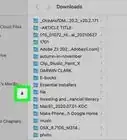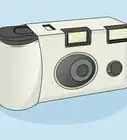wikiHow is a “wiki,” similar to Wikipedia, which means that many of our articles are co-written by multiple authors. To create this article, volunteer authors worked to edit and improve it over time.
wikiHow marks an article as reader-approved once it receives enough positive feedback. In this case, 94% of readers who voted found the article helpful, earning it our reader-approved status.
This article has been viewed 206,218 times.
Learn more...
The Pentax K1000 is an easy-to-find and relatively easy-to-use Film SLR that was produced from 1976 to 1997. The K1000 is popular among photography students and new-coming amateur photographers. Ready to get started? In just a few easy steps, you'll be able to set up (and use!) your new camera.
Steps
-
1Load the battery. Although not required for operation, the battery powered light meter built into the K1000 prevents the user from having to carry a separate meter or guess the right f-stop to use.
- To load a battery into the K1000, first locate the battery door on the bottom of the camera and insert a coin or flat head screwdriver into the slot. Unscrew the door until it can be removed from the camera body.
- Insert a single LR44 or SR44 into the camera with the positive side facing out of the camera.
- The door can now be screwed back onto the camera to secure the battery.
- To check if the battery is working correctly, look through the viewfinder of the K1000 with a lens on the camera and the cap off of the lens. When moving the camera from an area of darkness to an area of light, the needle on the right of the viewfinder should move from the bottom of the viewfinder to the top.
-
2Choose a 35mm film for your shoot.
- The K1000 requires 35mm film, which is available in several types. Color, black and white, slide, and infrared film can be used in the K1000. The speed of the film to be used is dependent on the subject and environment the subject is in. A higher film speed, such as ASA 800, can be used in lower light and produces less blur when the subject or camera is in motion. A lower film speed, such as ASA 100, is better for shooting in brighter light, but can produce more blur. A lower speed film will typically have a better quality than higher speed films, which may have a larger grain.
Advertisement -
3Select a lens.
- The K1000 uses lenses with the Pentax K bayonet mount. Adapters can also be found to use other style lenses with the K1000. The K1000 is commonly found with a 50mm prime lens, but many others can be found that were made with the K bayonet mount system. Zoom lenses can be used in a large variety of situations but owning several different prime lenses is popular among many photographers as well.
- To mount a lens on the K1000, first line the red dot on the side of the lens up with the red dot on the camera body and insert the lens into the body of the K1000.
- Twist the lens clockwise until the lens is unable to move any more.
- To remove the lens, press the release button on the front of the camera inward and rotate the lens counter-clockwise until it can be removed from the camera.
-
4Load the camera with film.
- To open the back of the K1000 and load a roll of film, pull up on the film rewind lever until the back of the camera pops open.
- Place the film cartridge nub side down into the chamber on the left of the camera, with the film leader facing towards the right of the camera.
- To lock the cartridge in place, press the rewind lever back down into the camera body.
- Pull the film leader out of the cartridge and across the camera, keeping it straight, until it can be secured in the slot in the film take-up of the K1000.
- After feeding the leader into the slot enough to keep it secured, actuate the quick advance lever on the camera, making sure the perforations on the film catch on the sprockets to the left of the take-up.
- If the film moved advanced smoothly and did not release itself from the slot on the take-up, then press the shutter and advance the film again.
- If the film advanced smoothly the second time then close the camera back and alternate activating the shutter and advancing the film until the shot dial on the top of the camera is set to zero.
-
5Set the film speed on the camera.
- To set the film speed on the camera, lift the outer ring on the shutter speed dial and rotate the dial until the number matches the speed of your film.
-
6Set the shutter speed and aperture.
- The integrated light-meter in the K1000's viewfinder shows when the camera is set up to give optimal brightness in a photo when the camera is pointed at the subject. The needle in the viewfinder indicates optimal brightness when the needle is pointing horizontally across the viewfinder to the left. When the needle is pointing higher the photo is too bright, and when the needle is pointing lower the photo is too dark.
- To adjust the brightness, first rotate the aperture ring to see if the brightness improves.
- A lower aperture size, or f-stop, allows more light through the lens, brightening the picture. A higher f-stop allows less light through the lens, darkening the picture.
- If the needle does not move, then rotate the shutter speed dial and try to adjust the f-stop again.
- A higher shutter speed allows less light through to the film, and a lower shutter speed allows more light through to the film. Any shutter speed less than 125 can be used with a flash and would mean a longer exposure time and more chance of blur if a flash is not used.
- Adjust the shutter speed and f-stop until the needle is pointing horizontally across the viewfinder to the left.
-
7Frame your subject.
- To take a good-looking photo, you may need to make the subject bigger or smaller in your viewfinder. To do this, you either rotate the zoom ring on your zoom lens, switch between different sized prime lenses, or physically move the camera towards or away from the subject.
-
8Focus on the subject.
- To focus on the subject, simply rotate the focus ring on the camera until the subject is no longer blurry.
- Experiment a little with rotating the ring back and forth past the point where your subject looks clear so you can best judge when the subject is clearest.
-
9Take the picture.
- When you are satisfied with the camera settings, take the picture.
- Press the shutter button slowly and evenly to best prevent shaking of the K1000. The shutter button on the K1000 allows for a remote release to be screwed into it to completely eliminate shake when using a tripod.
- To advance the film to the next shot, simply actuate the quick advance lever, making sure the shot counter move up to the next shot.
- The K1000 does not know automatically when a roll of film is finished, so it is important to remember how many shots your roll of film has.
- If you feel any resistance when attempting to actuate the quick advance lever, then it is important to not force the lever as it may damage the film. Resistance would generally mean the film has been used up.
-
10Unload the film.
- When the roll of film has been used up, it is time to rewind the film. Press the film release button on the bottom of the K1000 and then unfold the little handle on the film rewind lever.
- Start rotating the lever in the direction the arrow on the lever is pointing until you no longer feel any resistance.
- The back of the camera can now be opened by lifting the rewind lever.
- At this point, the film can be lifted out of the camera and placed back in its protective canister.
- The film can now be taken to a photo developer or even developed yourself.
-
11Flash usage.
- A flash can be used with the K1000 by setting the shutter speed dial to below 125 and connecting a flash either using the hot shoe or using the plug on the front of the camera body. Most flashes use the hot shoe. To connect the flash simply insert batteries into your flash, slide the flash onto the hot shoe, and tighten the knob on the bottom of the flash.
- To use the flash, you have to set the aperture to the f-stop given by the flash and either determine the correct distance for manual usage or use the automatic function of the flash.
-
12Care for the K1000.
- The K1000 is durable but it should be cleaned regularly. Clean the lens with a soft lint-less cloth spritzed with a small amount of lens cleaner, using circular motions to rub the lens clean.
- The inside of the camera can be brushed clean with a small camera brush and the mirror can be blown clean with a small puff of air from a camera cleaning kit.
Community Q&A
-
QuestionCan I convert my K1000 to digital?
 Community AnswerWhen you take your film to be developed at a large company (Walgreens, Walmart, etc.) they send it away. You will get back physical photos and your pictures will be copied onto a CD, giving you a digital copy.
Community AnswerWhen you take your film to be developed at a large company (Walgreens, Walmart, etc.) they send it away. You will get back physical photos and your pictures will be copied onto a CD, giving you a digital copy. -
QuestionCan I remove the lens while the film is in the camera?
 Community AnswerYes, the mirror inside the camera is down normally and that will block light from hitting the film. The mirror flips up during the exposure when you press the release button and take the picture. Lenses can be switched while film is loaded with no problem.
Community AnswerYes, the mirror inside the camera is down normally and that will block light from hitting the film. The mirror flips up during the exposure when you press the release button and take the picture. Lenses can be switched while film is loaded with no problem. -
QuestionWhere on the camera is the model number and type shown?
 Community AnswerThe type is shown above the lens on the camera body. The model is shown on the front on the camera body to the left of the lens.
Community AnswerThe type is shown above the lens on the camera body. The model is shown on the front on the camera body to the left of the lens.
References
- Pentax K1000 Manual
- K1000 Review and How-To Video
- Film Buying Guide
- All photos taken by SpartanPhalanx1
